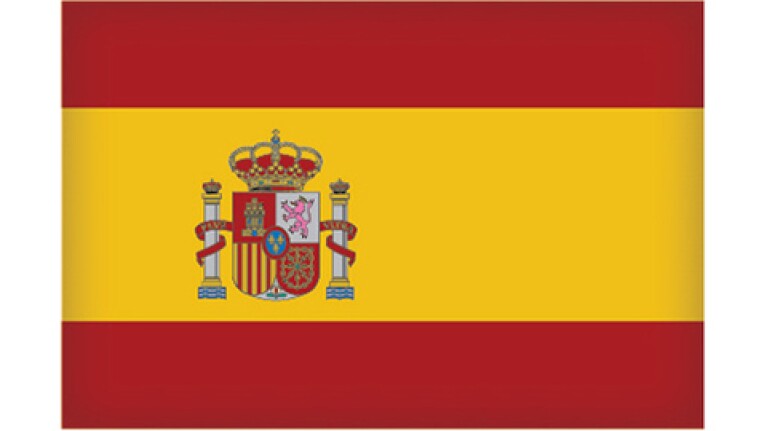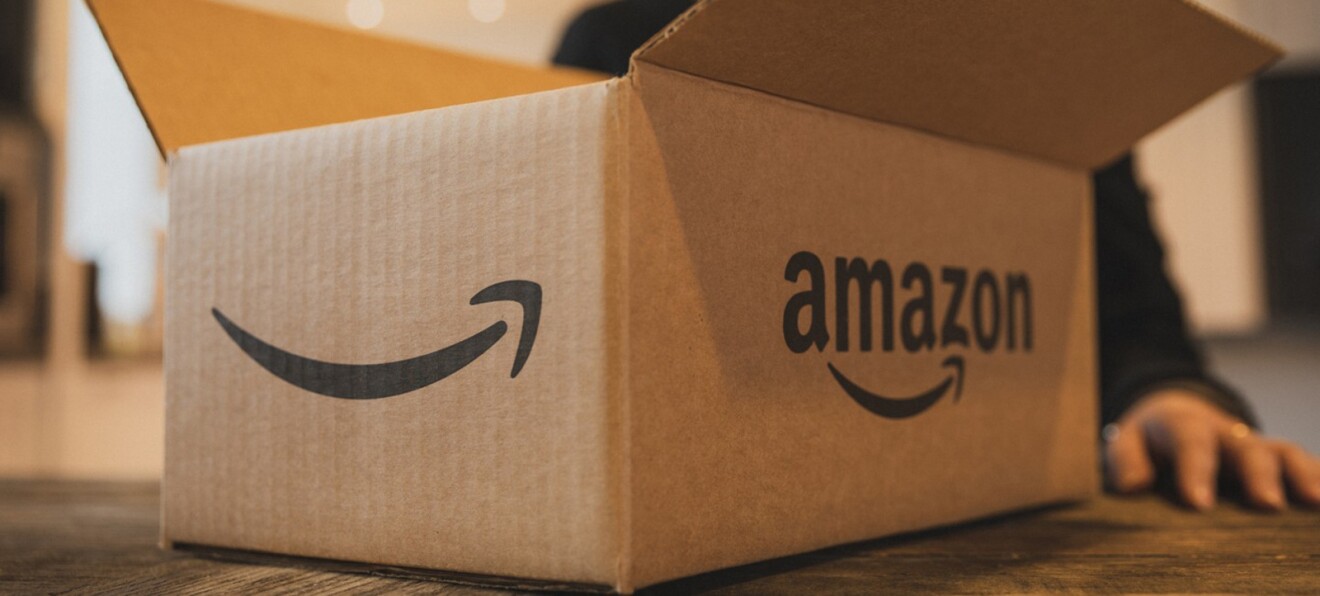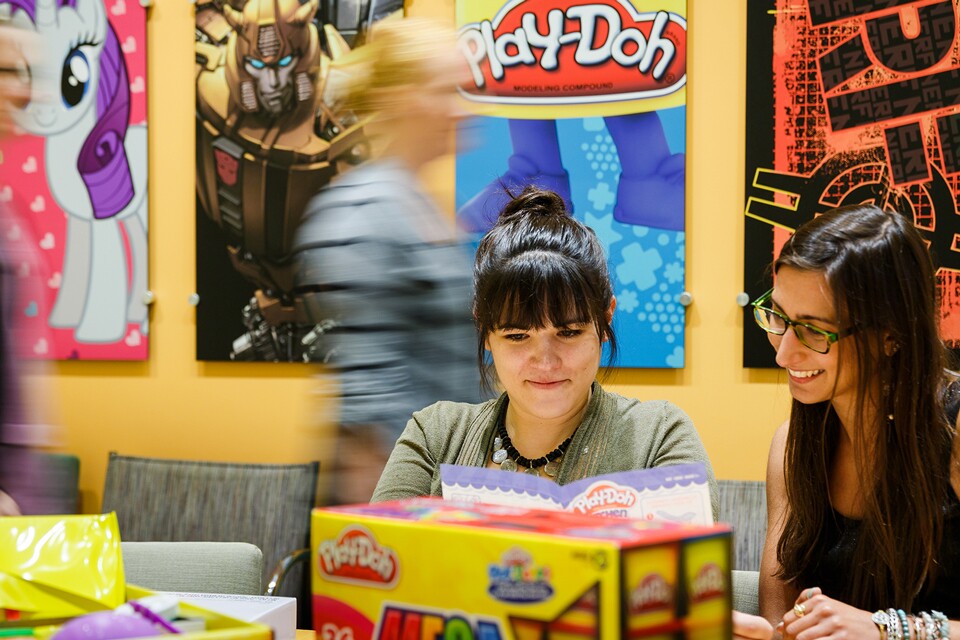We are always looking for ways to make shopping better. When we see a product category such as stemware that presents serious packaging challenges, we take the opportunity to innovate solutions that our Vendors and customers can both benefit from. For this project, we worked with packaging design studio Fuseneo to identify where and how the most common damages occur and how to better protect products while reducing waste with a more compact package.
Assessing the damage
Drop testing revealed that, most of the time, wine glasses would fracture at the stem from an indirect impact. This seemed to be due to the design of the insert structure, which held each glass by only two or three points of contact.
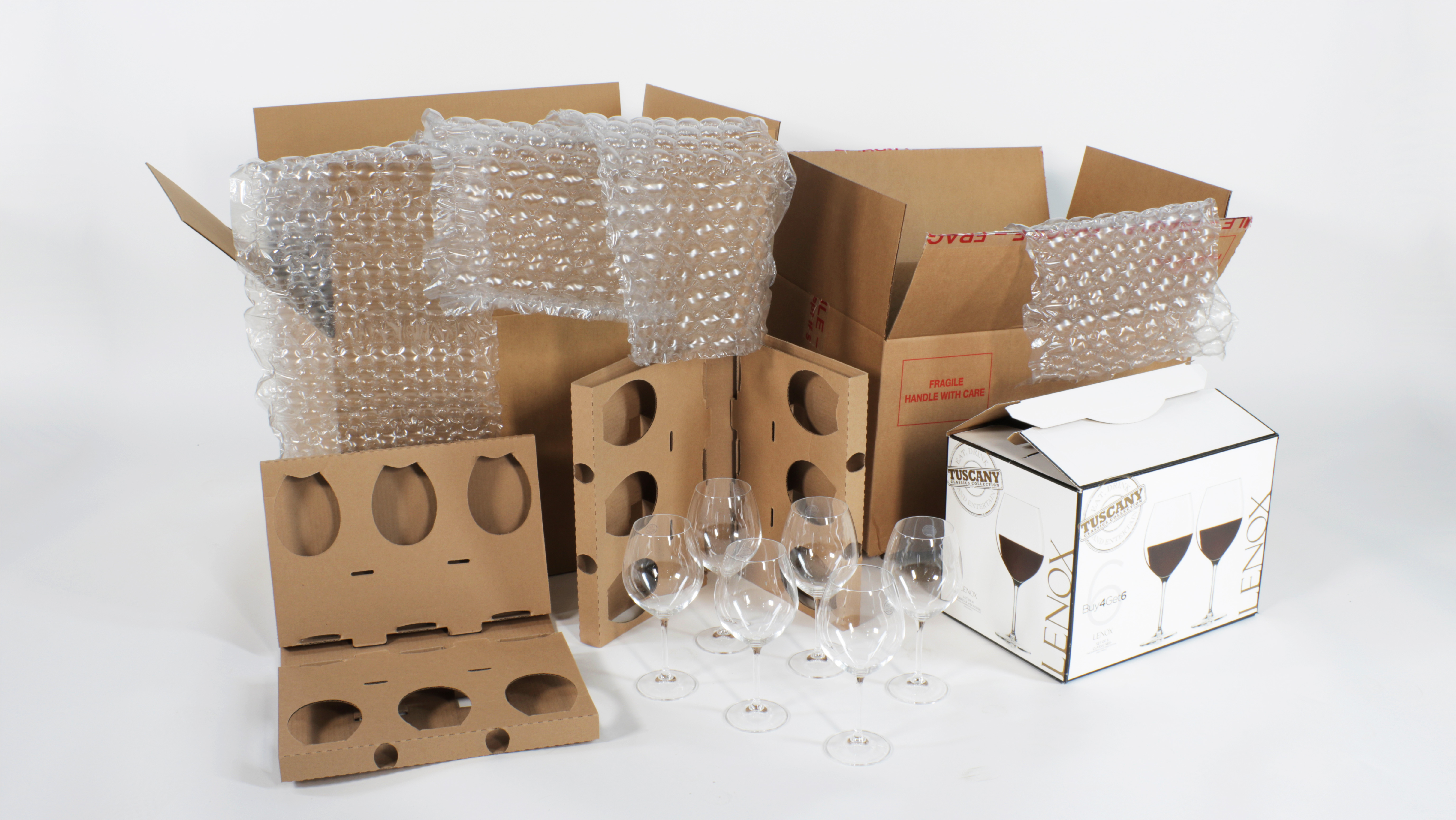
A typical set of wine glasses was found to arrive with several layers of packaging material inside a large overbox. While this amount of padding is expected with fragile products, it made for a poor experience for customers and still did not provide adequate protection to minimise damages. The new packaging would have to do a lot more with a lot less space and material.
Designing a solution
It was clear that the corrugated insert held the greatest potential for adding protection and cutting down on volume and packaging material. Concept prototypes were tested for strength, then refined to reduce waste as much as possible without compromising protection. The result was a compact, lightweight, correctly sized box and insert suitable for sending without adding bubble wrap or an overbox.
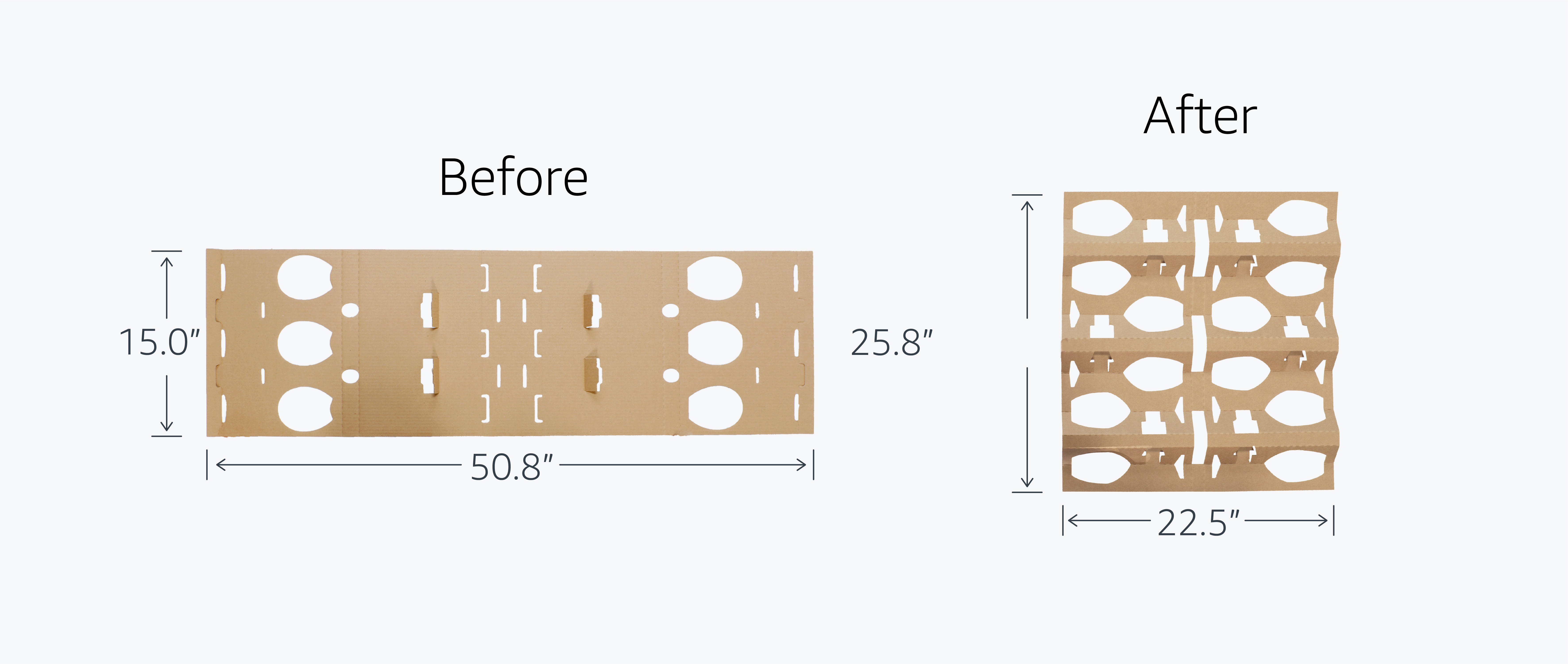
The original packaging had all six glasses in an upright position. By simply alternating their orientation, the glasses were able to nest together, saving space while maintaining sufficient distance between each glass.
Measuring the savings
The final packaging was measured against the original by material weight and dimensional volume. It was surprising just how much space and material could be reduced, and these savings will multiply with each unit that is dispatched.
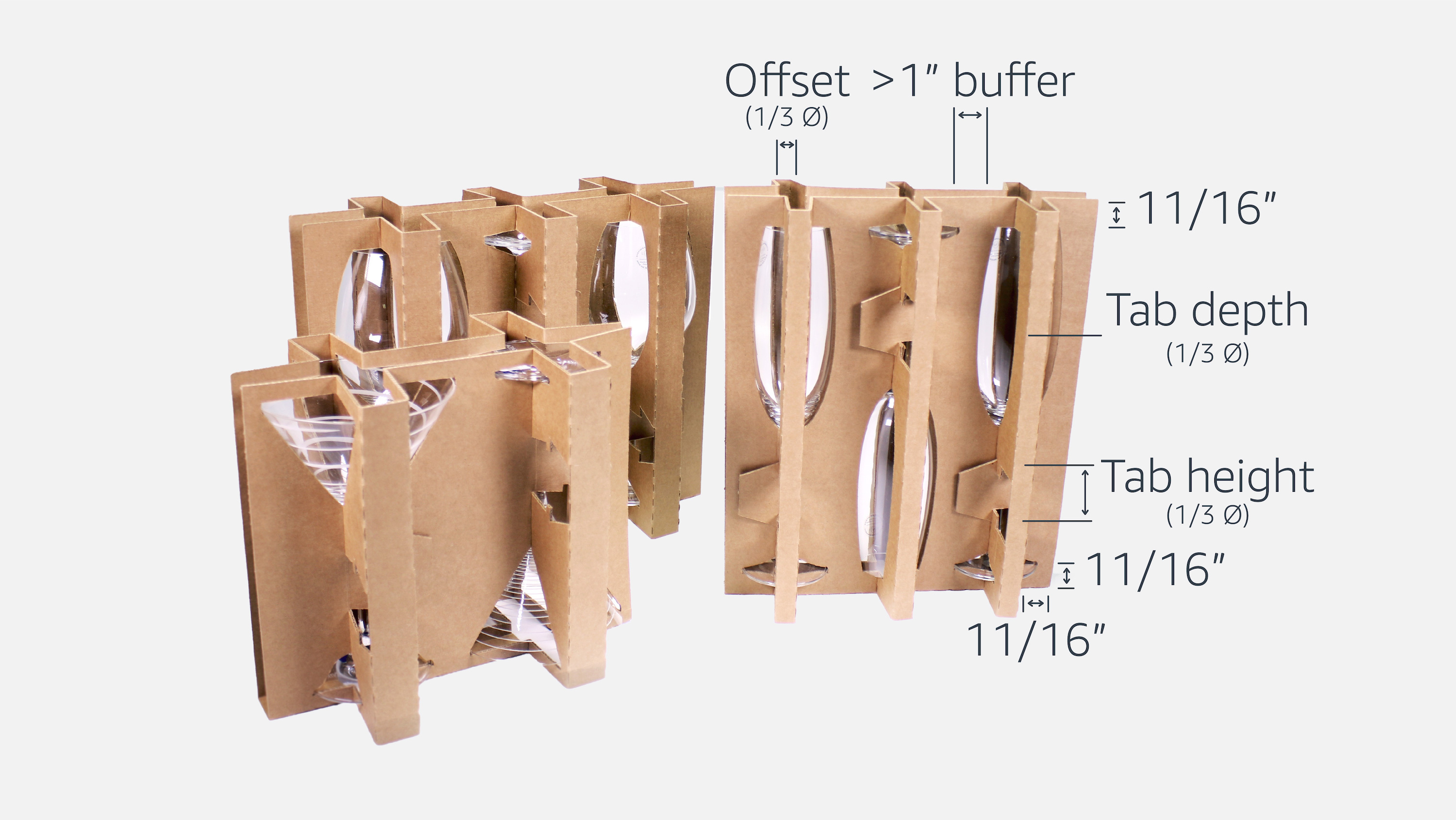
Space-saving, protective packaging should be the standard. That’s why this design was created with the whole stemware category in mind. The new insert concept was made into a template with variable dimensions that can be adjusted for other glass shapes. As other Vendors adopt designs like these, it will compound the reductions in waste and improve experiences for customers.
